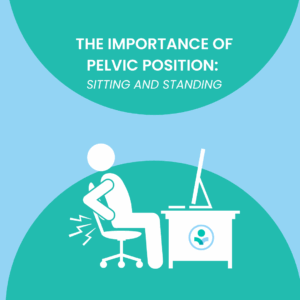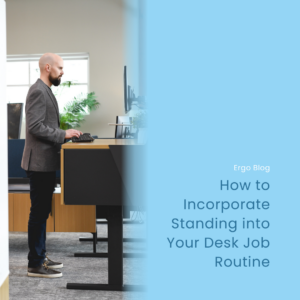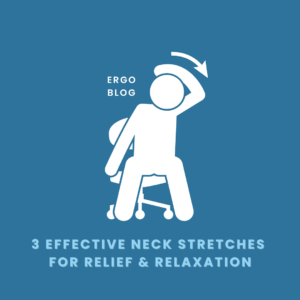Updated: Apr 20, 2023
Ergonomic Standing Solutions and Anti-fatigue Mats
Humans have been designed to walk on two legs. However, even with this design, it is not advantageous to stand still. We are basically trying to stay balanced in an upright posture and little muscle activity takes place. Once we start to lean forward or backward, our back and abdominal muscles engage. Standing for long periods of time can be a very difficult task, especially when you are standing in a spot and not moving, called static standing. There is little engagement of our core muscles with static standing. Some people may feel low back pain and muscle fatigue when standing for long periods of time. When your weight is shifted from side to side, forward and backward and more movement takes place while standing, it is called dynamic standing.
Standing while working does offer some great benefits which include a greater reach when compared to sitting, body weight can be used to exert forces, less leg room is needed for standing workers than seated workers, lumbar disc pressures are lower in standing than sitting, standing can be maintained with little muscular activity and requires no attention and trunk muscle power is twice as large in standing than in semi-standing or sitting.
Ergonomic Solutions When Standing
- Sitting. If you are finding yourself in a standing position for long periods of time, consider adding sitting to your daily routine. Just like with standing, sitting for long amounts of time is also not favorable. It is ideal to change your positions frequently. Sitting on an office chair or task stool to support a seated position can help relieve your body from standing.
- Shoe inserts and custom orthotics. Our feet and legs sustain a decent amount of force and body when we are standing. Wearing shoe inserts or custom orthotics with a well-fitted shoe can help improve the comfort of your lower extremities. Talking to a shoe expert and checking out our shoe blog, can help you get back on the right foot.
- Footrests and footrails. When static standing with both feet on the floor it is helpful to have a solution to help shift our weight and provide another standing position. By using a footrest or a footrail about 4 inches from the floor, you can rest one of your lower extremities at a different height than the floor level. The use of either a flat or 15 degree tilted platform is the best solution. However, a footrail is better than no solution and standing on the bare floor. Footrests and footrails also improve the position of your pelvis and your lower extremities.
- Anti-fatigue mats. Standing for long periods of time can cause feelings of muscle fatigue, especially in our calf muscles. The name of an anti-fatigue can be misleading since they do not actually reduce fatigue, however, they do reduce discomfort in the lower leg, feet, and back. Anti-fatigue mats can also help reduce muscle fatigue in some of our back muscles. In terms of reducing fatigue, rubber mats are not as favorable due to the fact of being slightly unstable which may stimulate postural muscles in our lower legs. However, rubber mats, along with carpet and wooden and plastic platforms may provide insulation against cold flooring. They may also offer better friction and aid in postural stability and help prevent accidents.
When specifically exploring anti-fatigue mats, a study by Konz et (1990) found that 5.8% compression was perceived as more comfortable than mats that had a compression rate of 7.4% and 18.6%. All mats were preferred over concrete.
In conclusion, be sure to move often and frequently throughout your workday. Physical inactivity is harmful and sedentary work is a risk factor for the development of serious medical problems. Adding activity to your workday can be a process with many considerations that take place. Alter Ergo is here to help you through the process.
Check out our YouTube video below for a visual representation of the blog!



